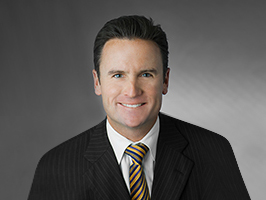How Big Data Is Reshaping Property Management
Property managers have long sought to optimize performance by looking into data collected through building systems. That day has finally arrived.
Property managers have long sought to optimize performance by looking into data collected through building systems. These days, however, new energy software and connected devices are making it increasingly cost effective to analyze vast sets of information, revolutionizing the ability to run buildings more efficiently, profitably and with less staff.
“Technology has evolved exponentially and plays a critical role in both the monitoring and improvement of the building systems performance,” said CBRE managing director Brian Jennings, who oversees the U.S. business operations of the company’s property management arm, which currently oversees 900 million square feet of office, industrial and retail properties.
Data collection points related to building operation systems include electrical, HVAC, fire/life safety, utilities and telecommunications, among others, Jennings noted. The data is compiled in a building management and automation system so that operations can be monitored and adjusted.
Proactive maintenance
According to Colliers International national engineering manager Jeff Gerwig, the newest trends in data analytics center around energy software that “intertwines” the building management or energy management system. Gerwig is responsible for building operations across his firm’s management portfolio of 575 million square feet.

Jeff Gerwig, National Engineering Manager, Colliers International. Photo courtesy of Colliers International
These software tools connect each piece of equipment, and more important, connect each component within each piece of equipment, according to Gerwig. That results in the creation of more analytics and more real-time data. For example, rather than a property manager or engineer turning on a piece of equipment and setting the temperature, they’re able to receive additional analytics that allow for fine-tuning the equipment. That ability, in turn, creates cost savings as well as an alerting feature that tells the manager whether there are any amperage variations.
“The alert allows property managers to respond to equipment failures predictively, so that’s a real new trend, and that, in turn, is really helping out with tenant relations and retention, so it’s kind of twofold,” Gerwig said. In some cases, he added, this function allows you to approach a client in advance of an equipment failure and offer replacement prior to malfunction or stage the replacement equipment on site, teed up for the failure rather than starting from scratch, which could create downtime for the tenant and potentially result in a client having to provide rent relief.
Data-powered fine-tuning
Colliers uses SkySpark, a product of Glen Allen, Va.-based software solution provider SkyFoundry, for its data analytics and performance monitoring services. The intelligent software tool is used to data mine various building automation networks or raw collected data for executive-level summary reports and facility performance information.
Gerwig said the software is also being leveraged to reduce the amount of staff time required for managing sites. “Roving engineers” can predictively respond to issues without having to be on site. Instead, they use the technology to monitor from afar and only respond if there’s an alerting request.
Moreover, Gerwig pointed out that AI is coming into the picture as an extra component intertwining the full building. It allows the property to function far beyond collection of readings from individual pieces of equipment and communication through alerts. “If a suite is unoccupied, it’s telling the computer, ‘Back off airflow to that space, and let’s redistribute somewhere else and reduce the amount of strain on the building,’ ” Gerwig explained.
CBRE’s Jennings said that, when it comes to maximizing building performance, Energy Star is one of the most significant benchmarking and efficiency tools his firm deploys. Data collected using the benchmarking system is measured to ensure optimal performance. “Energy Star Portfolio Manager allows us to measure energy and water use,” he said. “With access to more than 150 different metrics, we work with our service partners to monitor and adjust building systems to achieve optimal performance.”
“Whether seeking a LEED certification or participating in the GRESB benchmarking process, the collection process requires a systematic approach to ensure that the data is both valid and usable to optimize building performance while creating efficiency,” Jennings explained. “Depending on the client, building data requirements can be more complex, especially if a client is looking to obtain various certifications and designations.”
Cutting costs, cutting emissions
When talking cost-cutting and fine-tuning energy consumption, sustainability often takes center stage, with a strong helping hand from data collection and analysis. Two years ago, CBRE’s sustainability team launched the firm’s Climate Change Champion awards, an initiative aiming to highlight buildings and property management teams exemplifying the company’s efforts toward energy conservation and combatting climate change.
This year, the firm recognized its top 25 managed properties in the U.S. that achieved a 10 percent or greater year-over-year increase in Energy Star score. These combined efforts have resulted in a total greenhouse gas emission reduction equivalent to cutting nearly 86 million miles driven by an average passenger vehicle or planting more than 580,000 trees.
“Achievements like these have demonstrated our continued commitment to provide cost savings to our clients through substantial energy savings, while also improving the environmental performance of your building by reducing climate-damaging GHG emissions,” said Chris Connelly, CBRE’s global president of property management.










You must be logged in to post a comment.